Ladybugs are one of the most fascinating insects in the entire world. These insects come in a variety of bright and vibrant colors that would surely catch a person’s attention despite their tiny size. They exist in a wide array of hues ranging from red, orange, yellow, pink, black, and white.
But, why do ladybugs come in different colors? Ladybugs come in different colors because of their varying species, diet, and place of residence. This means that the shade of their body structures may depend on the family they belong to, the food they eat, and the environment where they are nurtured.
To discover more of these insects, let us get to know their colors in their various life stages, the colors of “good” and “bad” ladybugs, and the effects of their presence in our households and gardens.
What Color Are Ladybugs?
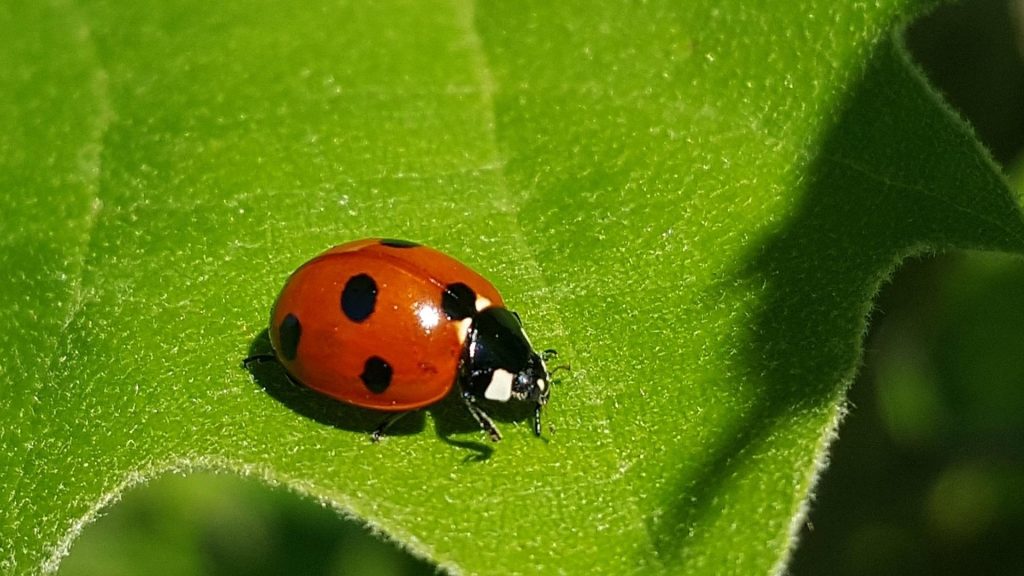
Ladybugs come in a diverse range of colors. Their body structures may be endowed with attractive and striking hues of yellow, orange, red, pink, white, and black. Some have black, red, yellow, and white dots, while others have stripes. However, some ladybugs do not have markings, stripes, or any dots.
Furthermore, these colors have a distinct purpose. In most cases, the dazzling colors of ladybugs function as a warning for predators to not put up a fight with them.
Do Male and Female Ladybugs Vary in Colors?
There are no significant differences between the colors of male and female ladybugs as the shade of their bodies may depend upon certain physical and environmental factors. However, it is said that the labrums (an anterior body part) and prosternum (a body structure found under the head) of male ladybugs are lighter in color than that of female ladybugs.
Other than that, the male species have pale and light coxal spots and femoral markings on their front. Also, they are smaller in size than the female species, and the length of their antennae is slightly increased.
What Color Are Baby Ladybugs?
Baby ladybugs are commonly referred to as larvae. These tiny creatures are like small alligators as to appearance. Their colors, markings, and body shapes may depend upon the breed where they belong, but most of them are in the shades of black.
Moreover, their bodies are extensive in length and filled with spiky exoskeletons and yellow to orange spots. They develop quickly and molt their skin covers several times during the two to four weeks of their lives.
What Color Are Ladybug Eggs?
It is believed that a female ladybug can lay up to 300 eggs. These eggs are typically yellow in color, while their body structures are oblong in shape.
They are laid in groups or clusters, usually under a leaf where aphids congregate and stay. The aphids will serve as a food source when these eggs become larvae. Also, these eggs will be hatched after two to ten days.
What Determines a Ladybug’s Color?
A ladybug’s color can be determined by lifestyle and diet, the breed where they originate, and the region where they thrive. There are about 5,000 species of ladybugs belonging to the family Coccinellidae, order Coleoptera and class Insecta. Good examples include the following:
- Seven-spotted ladybug (Coccinella septempunctata) – Has a bright red elytrum with seven dots spread all over their bodies and is usually found in European countries.
- Coleomegilla maculate ladybug – Has pink to red in color with black spots on their body structures. It is prevalent in Southern Ontario, New York, and Southern New England.
- Asian ladybug (Harmonia axyridis) – It is referred to as the multi-colored Asian lady beetle because of its various colors, such as yellow, orange, red, and black. They are endemic in North America but are also present in the United Kingdom.
Do Ladybugs Change Color?
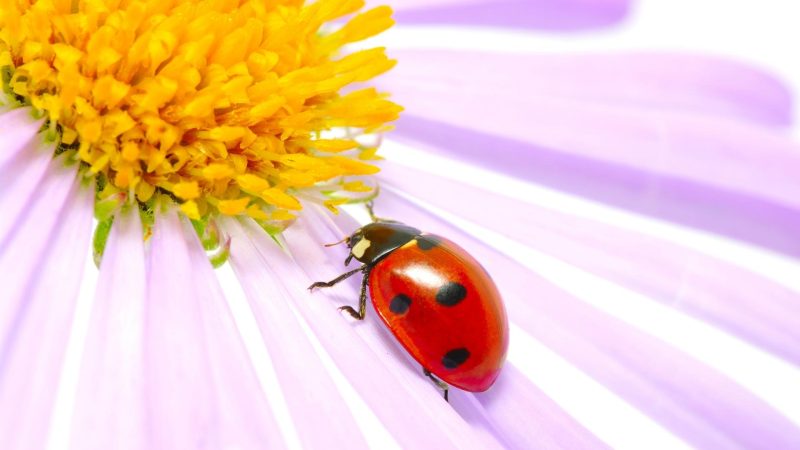
Ladybugs tend to change colors. Some ladybug species can transform into other bright shades throughout the year, while others camouflage themselves into the color of the vegetation where they stay and hibernate.
They seldom change the colors of their exoskeletons to advise potential predators of their defense mechanism, especially when they undergo mating. Furthermore, ladybug nymphs and larvae also change their colors when they develop and mature into the next life stages.
What Color Are Ladybugs Eyes?
Ladybugs have two eyes that cannot see things clearly. Their eye structures can only view light and dark as if their everyday sight is similar to a black and white photograph. It is ironic to think that they have colorful and vibrant body structures, but they cannot perceive colors at all.
What Is the Rarest Color of Ladybug?
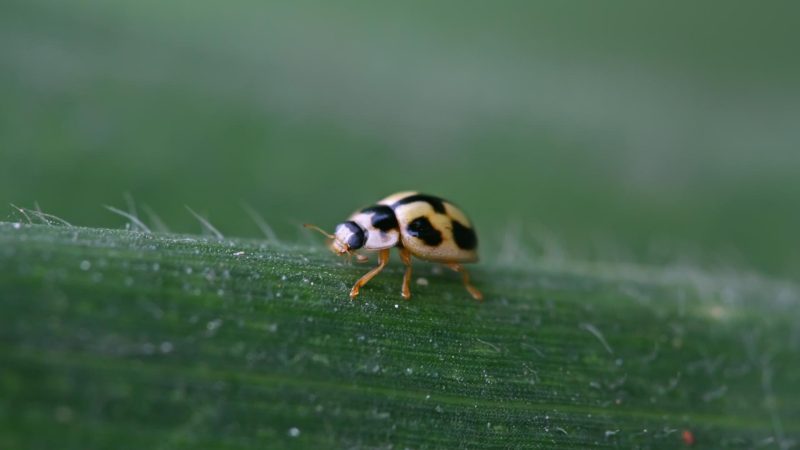
There are about 5,000 types of ladybugs in the entire world with a diverse variety of colors. However, the shades of gray, black, white, brown, blue, and pink are somewhat uncommon and unusual to observe. This is because most of the ladybugs we see have red, orange, and yellow body structures.
Nevertheless, a rare type of ladybug has been discovered in Montana in the USA that can hide its head inside its throat. Just like a normal ladybug insect, it is small in size but has a tan color.
What Color of Ladybugs Are Poisonous?
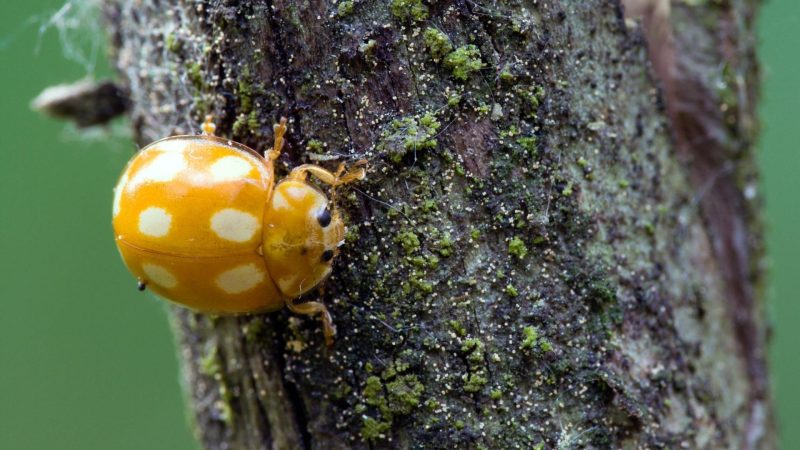
It is a well-established fact that the brighter the color of a ladybug, the more it can produce toxins and poison to its predators. Thus, ladybugs that come in vibrant and striking shades are more poisonous than the others.
These ladybugs can easily ward off predators when in jeopardy or put in a dangerous situation by producing a yellowish-red substance that has a very foul and strong smell. The said odor will keep their natural enemies from going near to them.
Among the many types of ladybugs, it is said that the orange-colored ladybugs such as the Asian ladybug species emit the greatest number of toxins. Another popular breed that is famous for its ability to produce poison is the pine ladybugs that have black bodies with prominent red dots.
What Color Are Good Ladybugs?
The good ladybugs are those that produce the least number of toxins and don’t leave a massive amount of foul liquid in homes and gardens. They are the ones that can stay and lurk around your backyards to eat and kill insects that will destroy your plants and flowers. This includes the ladybugs that are brown, white, and gray in color which emits the slightest amount of poison and insect venom.
Furthermore, some ladybug species are considered as a symbol of good luck. This is because of the help and assistance they give to farmers and crop growers. When ladybugs are present on a farm or plantation, there is an obvious decrease in pest infestation as these insects will devour crop predators such as aphids. Not only that, superstitions dictate that when a ladybug lands on you, you must count the number of dots present in their bodies as it will indicate the number of years that you’ll receive good luck.
Are Gray Ladybugs Poisonous?
Gray ladybugs are generally not poisonous, unlike those in the colors of orange, red, and yellow who secrete a huge throng of poison. Although these insect types may bite or produce unwanted chemicals, the harm that they can give is not as significant as what the bright-colored ladybugs can provide. They are less harmful and poisonous, so they are worthy to be called “good” ladybugs.
Is It Bad to Have Ladybugs in Your House?
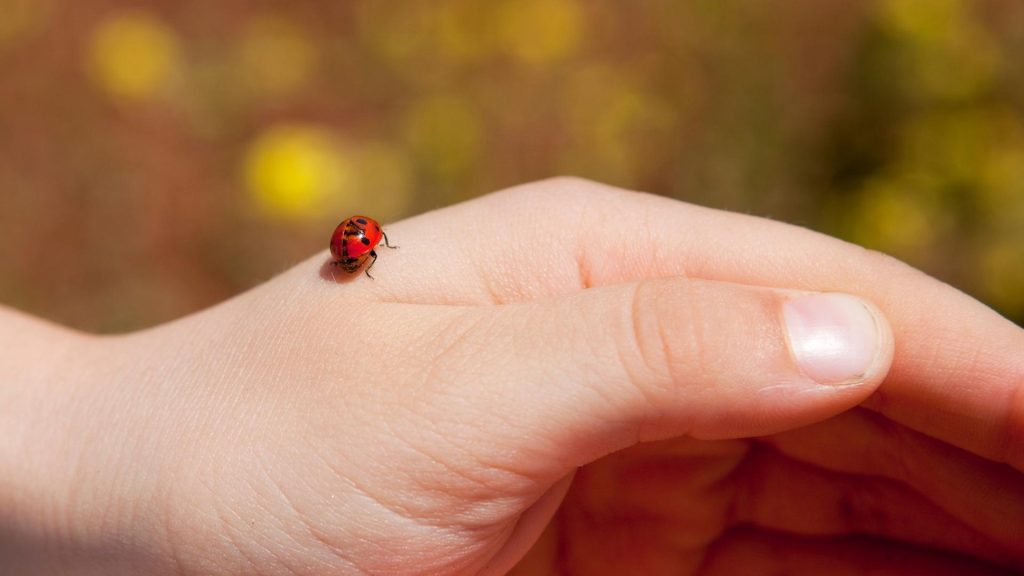
Ladybugs are generally not harmful to humans. However, they may cause allergic reactions when a person is exposed to the yellowish-red liquid they release when threatened or put in a perilous place. It is unusual for them to cause bites and cause sickness to humans, so they do not typically pose an extreme risk. They cannot transmit infectious diseases and illnesses to people, so they cannot be considered major household pests.
Furthermore, ladybugs can be a nuisance when they swarm and congregate inside a building or enclosure. This is especially true when they seek shelter in the indoor spaces of a house to avoid the freezing temperature of the winter outdoors. Thus, even though they do not typically cause health problems and issues, it would still be beneficial to get rid of them when they start to invade our homes.
Related: Are Ladybugs a Pest? | Information and Facts
What Month Do Ladybugs Come Out?
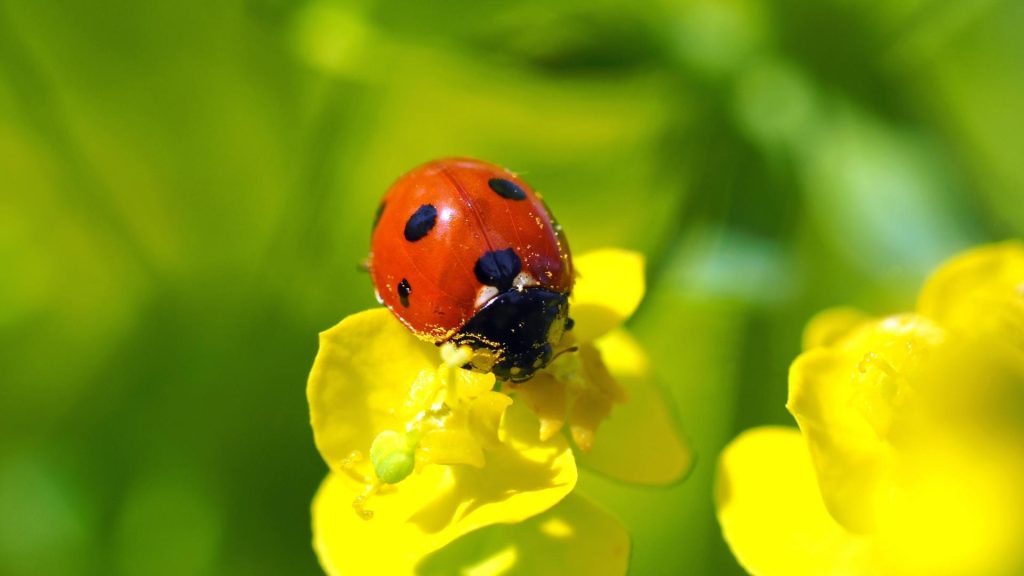
Ladybugs are active during the dry and humid seasons. Therefore, you would see them coming out during the summer, spring, and fall months. There is an increase in the growth of plants, crops, and vegetation during the said seasons, so you will see them often in these areas.
Also, there is a high possibility that aphids will invade the agricultural fields and crops during these times. So, the ladybugs will surely march towards these places as these insects are their main food source.
Summary
Ladybugs are considered very adorable creatures due to their bright and colorful external structures. However, these colors are a method of defending themselves from predators that may cause harm and danger to them.
It is said that when a ladybug has vibrant body structures, it is more poisonous and lethal to other insects and animals. This serves as a warning for natural enemies not to mess with them as they can release toxic fumes and chemicals if put in a dangerous place.
List of Sources
Bessin, R. (2019). Ladybugs. University of Kentucky.
Daw, S. (2020). Ladybug. U.S. National Park Service.
Ramsey, M. (2015). Ladybug, Ladybug, Fly Away Home. University of California – Agriculture and Natural Resources.
- How to Get Rid of Copperheads | Practical Guide - August 27, 2023
- How to Get Rid of Corn Snakes | What Makes Them Aggressive? - August 27, 2023
- How to Get Rid of Alligators | Safety Measures and Removal Methods - July 16, 2023
